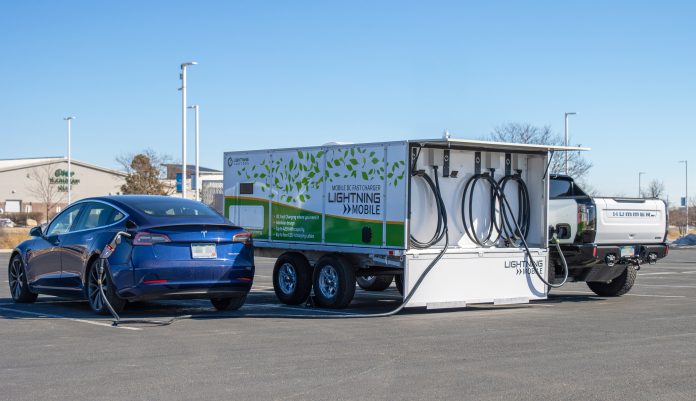The future of mobility depends not just on technological advancements, but also on our ability to adapt and prepare for the unexpected. By embracing creativity and foresight, we can pave the way for a world where EVs are not only a green alternative but a dependable choice in every situation.
In a rapidly evolving world where electric vehicles (EVs) are becoming increasingly prevalent, ensuring their reliable operation during emergencies and in remote locations presents unique challenges.
Electric Vehicle (EV) charging during emergencies involves ensuring that EVs can be recharged quickly, reliably, and safely, even under adverse conditions.
Here, we explore innovative and creative solutions to address EV charging needs in such scenarios.
Emergency Situations for EV Charging:
- Far Areas: Rural or less developed regions may lack sufficient charging infrastructure, making it challenging for EV owners to find charging stations.
- Hill Stations: Elevated and often isolated locations where installing and maintaining charging infrastructure can be difficult.
- Offshore Locations: Islands and coastal areas with limited access to the mainland power grid may face significant challenges in supporting EV charging infrastructure.
- Natural Disasters: Hurricanes, earthquakes, floods, and wildfires can disrupt the power grid and create significant challenges for EV charging.
- Power Outages: Blackouts, brownouts, or other disruptions in the electrical supply can hinder the ability to charge EVs.
- Accidents and Roadside Breakdowns: EVs can run out of charge unexpectedly, requiring immediate assistance.
Charging Solutions in Emergency Situations:
1. Portable Chargers (Flexible lifeline)
- Advantages:
- Easy to Transport: Portable chargers can be easily carried in the trunk of an EV or by emergency response teams.
- Standard Outlets: They can be used with standard electrical outlets found in homes, offices, and many other locations.
- Types:
- Level 1 (120V): Suitable for overnight charging or when extended charging time is available. Provides approximately 3-5 miles of range per hour.
- Level 2 (240V): Faster charging suitable for short stops, providing approximately 10-20 miles of range per hour.
- Limitations:
- Outlet Dependency: Requires access to a functioning electrical outlet, which may not be available in remote or disaster-struck areas.
- Slower Charging: Level 1 chargers are particularly slow, making them less ideal for urgent situations.
2. Mobile Charging Units (Power on wheels)
- Functionality:
- High-Capacity Batteries/Generators:Vehicles of trailers equipped with substantial battery banks or generators to provide emergency charging.
- Capabilities:
- DC Fast Charging: Often supports DC fast charging (up to 50-100 kW), allowing for quick replenishment of EV batteries.
- Use Cases:
- Roadside Assistance: Deployed by roadside assistance services to aid stranded EVs.
- Emergency Response: Used by emergency teams during natural disasters to provide immediate charging.
- Remote Events: Useful during events in remote areas where traditional charging infrastructure is unavailable.
3. Renewable Energy Solutions (Harnessing Nature’s Power)
- Solar-Powered Chargers:
- Description: Deployable solar panels that generate electricity for EV charging.
- Advantages: Sustainable and particularly useful in sunny regions.
- Limitations: Dependent on weather and daylight conditions.
- Wind-Powered Chargers:
- Description: Portable wind turbines that generate electricity.
- Advantages: Suitable for windy locations.
- Limitations: Dependent on wind conditions and less portable than solar panels.
- Hybrid Systems:
- Description: Systems combining solar, wind, and battery storage to provide continuous power.
- Advantages: Ensures power availability regardless of weather conditions.
- Applications: Ideal for remote and off-grid locations.
4. Battery Swapping Stations (The quick switch)
- Description:
- Function: Facilities where EVs can exchange their depleted batteries for fully charged ones.
- Advantages:
- Quick Turnaround: Allows for rapid battery exchange, minimizing downtime.
- Challenges:
- Standardization: Requires standardized battery designs across different EV models.
- Infrastructure Investment: Significant investment is needed for setting up swapping stations and maintaining battery inventory.
5. Pre-installed and Resilient Charging Networks (Building for the future)
- Strategic Placement:
- Evacuation Routes: Installing charging stations along major evacuation routes to ensure access during emergencies.
Disaster-Prone Areas: Focusing on regions with a high risk of
- natural disasters to provide reliable charging options.
- Grid Resilience Enhancements:
- Upgrades: Strengthening the power grid to withstand and quickly recover from disasters, ensuring continuous power supply to charging stations.
- Microgrids and Energy Storage:
- Microgrids: Localized grids that can operate independently from the main grid during outages.
- Energy Storage: Utilizing battery storage systems to provide backup power to charging stations during grid failures.
- Renewable Integration: Incorporating renewable energy sources like solar and wind to ensure sustainability and reduce dependency on the main grid.
CONCLUSION:
Creative solutions for EV charging in emergency situations not only enhance the reliability and convenience of electric vehicles but also promote sustainability and resilience. From portable chargers and mobile units to renewable energy and battery swapping, these creative approaches ensure that EVs remain a viable and practical choice, even in the most demanding scenarios. By investing in these technologies and infrastructure, we pave the way for a greener and more resilient future.
